Sustainability is a significant aspect of every industry, but more specifically for the food and packaging industry. The different packaging materials lead to major sustainability issues. Any inappropriately used packaging material would not only harm the environment but would also be dangerous for the food it stores. However, the question arises what is sustainable food packaging?
Sustainable food packaging refers to packaging that is minimal to negligibly hazardous for the environment. Therefore, the materials used in such packaging are environment-friendly that cannot leave behind their footprints. This kind of packaging not only contributes to nature but is also a healthy method of storing food.
What Does Green Packaging Mean?
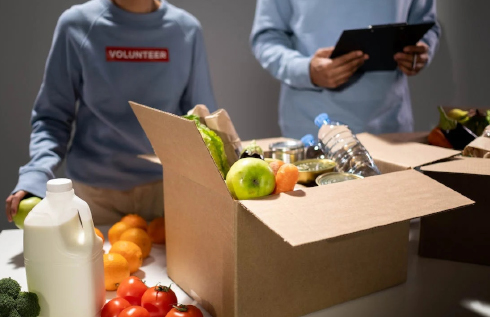
One of the most common questions that arise in the context of sustainable packaging is what is green packaging? Green packaging, often referred to as eco-friendly packaging or sustainable packaging, defines packaging designs that have the least negative influence on the environment.
They accomplish this by minimizing the amount of packaging trash produced and utilizing as many sustainable materials as possible during manufacture, such as recyclable or biodegradable packaging components.
In a nutshell, sustainable packaging is all about being aware of the carbon footprint of the company. Plastic and polystyrene are two prevalent packaging materials that have a negative environmental impact.
Conventional packaging layouts for takeaway food packaging ideas might often be ineffective, requiring much more resources than necessary. Therefore, one of the simplest methods for small businesses to reduce their impact is to switch to a sustainable package design.
Zero waste packaging is quite challenging to achieve. However, packaging waste can be reduced by selecting ecologically friendly solutions whenever possible. They offer the maximum choices for reuse, regeneration, and safe disposal while maximizing renewable energy. All companies have an obligation to reduce their carbon footprint. But a more eco-friendly approach isn’t the only advantage sustainable packaging has for the company.
Why Is Sustainable Packaging Important For Food Packaging?
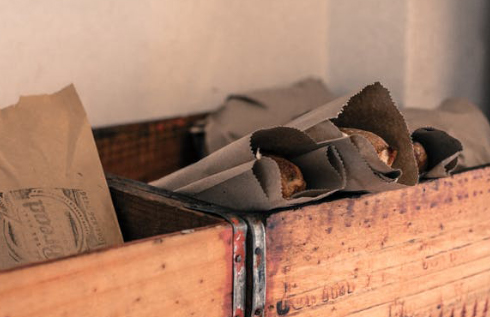
After knowing about sustainable food packaging several people might have this question why is sustainable packaging important? Sustainable food packaging does not incorporate allergens or toxins that contaminate the meals it contains. Because it doesn’t release toxic chemicals into landfills when it breaks down into waste, it’s better for the environment and is rather a creative food packaging idea.
Packaging volume is another facet of environmentally friendly food packaging. By making food packaging smaller, there is a requirement for less material, less energy to create it, lighter truckloads for transportation, and less waste for landfills. It is simpler and guilt-free to dispose of biodegradable packaging in the garbage.
It is even easier to discard the packaging for the products in a compost bin without endangering the degradation of the environment. All of these may further persuade consumers to support the business.
Eco-friendly packaging may be an especially good choice if the company sells products for families. However, because non-toxic food consumption is certain to be a priority for some consumers, it is one of the safest types of food packing.
Non-eco-friendly packaging materials can clog sewage systems and inhibit appropriate drainage since they do not degrade. Improper plastic packaging and container disposal can also result in insect and pest infestations.
Rodents, worms, and mosquitoes are just a few of the most prevalent pests that can breed and reproduce in the garbage. Communities near affected areas may contract leptospirosis and dengue fever from these parasites.
Toxins found in non-eco-friendly packaging materials, such as bisphenol A (BPA) and petroleum-based products, can contaminate food and water. It goes without saying that this is bad for health. Additionally, they endanger marine life. When solid waste products pollute the water, they also affect marine life.
Benefits Of Eco-Friendly Food Packaging
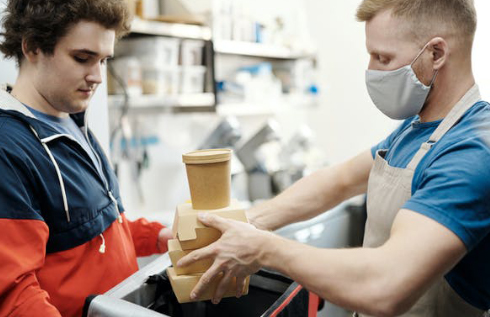
One of the many food company’s obligations is to choose the appropriate packaging for packing their food items. Cost, materials, size, and other factors must be taken into account in order to choose the best packaging. One of the newest trends is to choose eco-friendly packaging materials, such as the environmentally friendly and sustainable packaging solutions provided at YoonPak.
There are numerous advantages to using this kind of packaging, including:
- The environmental benefits of eco-friendly packaging are the most obvious. Eco-friendly packaging typically uses recycled and biodegradable materials, reducing the waste of raw materials in the manufacturing process. Additionally, the manufacturing process is typically more effective, using less precious resources overall and lowering the environmental harm that enterprises cause.
- Packaging that is ecologically friendly enhances the brand’s reputation. The consumers will get the impression that an organization understands and values the environment. Furthermore, it also sets an ethical agenda for the business that gives greater significance to sustainability. As a result, the company’s profitability and ROI will increase.
- Sustainable packaging makes extra storage space available for the company. The area includes transportation space, which allows the movement of more goods than before while lowering freight expenses. It assists in lowering the number of transport rounds to be completed, which ultimately lowers the costs. Additionally, smaller completed goods require fewer storage places, and the extra room offers various possibilities, such as extending the product range.
- Several consumers are concerned about the packaging’s composition and how it can impact their health and wellness. They can live a healthy life by purchasing products that are packaged in materials that are free of allergens and toxins. Biodegradable choices are scarce. However, the ones that are currently offered are increasingly adequate to enable a seamless transfer. The majority of the alternatives are compatible with similar machinery and conventional packaging materials. They are therefore inexpensive and simple to implement.
- Even more rigid sustainable food packaging is less in weight than other, more prevalent types of plastic packaging. This is due to the fact that sugar cane is used to make bio-based polyethylene resin covering. As a result, the substance made from plants is biodegradable and offers a safer alternative to other plastics. All of this can give items a lot of strength. The combined effect of these advantages can lessen the environmental impact on consumers and the business.
Disadvantages Of Eco-Friendly Food Packaging
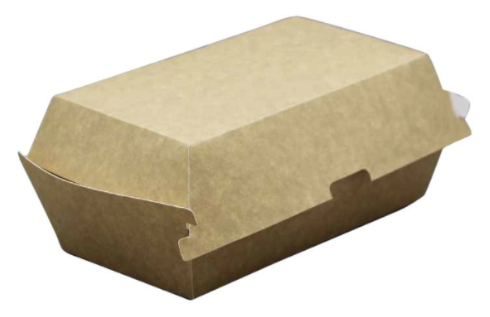
Though eco-friendly packaging is undoubtedly a better option there are some drawbacks to it:
- For many firms, especially small ones, the expense of transitioning from conventional to eco-friendly packaging can be rather high. The change in packaging may result in increased production expenses as well as increased expenditures for other internal packaging procedures. It can be challenging to predict exactly when eco-friendly packaging options for food packaging will become cost-effective in the long run.
- The components of eco-friendly packaging are easily degradable, but only if they are disposed of properly. Packaging poses a significant danger of cross-contamination both while it is being used by customers and while it is being recycled. Cross-contamination of eco-friendly packaging can make it harder for recycling facilities to break it down, resulting in more garbage than intended and an increase in the carbon footprint of the firm.
- Some environmentally friendly packing materials call on seasonal agricultural commodities. Corn, for example, is a pricey and regenerative crop. Corn provides both food and compostable packaging. Thus it creates a dilemma whether it should be used in packaging while it could be used to feed the poor and the needy.
4 Types Of Eco-Friendly Food Packaging Materials
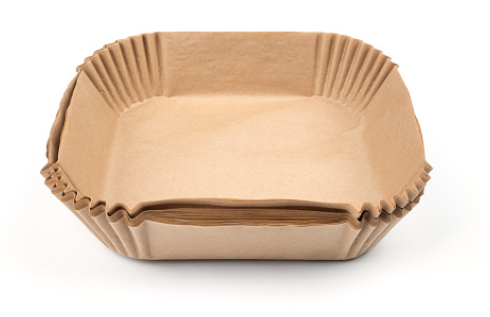
Once the question of what is eco-friendly packaging has been cleared, it is essential to know about the different types of eco-friendly food packaging materials that can be used.
Paper And Kraft
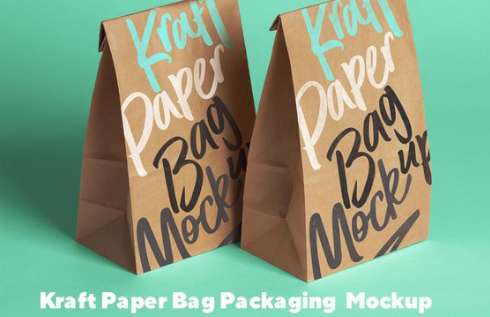
These sorts of environmentally friendly food packaging are widely employed in businesses around the world. It also goes by the names butcher paper or brown paper. The word Kraft is a German noun that signifies resilience, strength, and efficiency. Wood pulp is used to make Kraft paper which is then used to make environmentally friendly take out food containers.
A lot of kraft paper is manufactured from defective trees that can’t be used for anything else. It doesn’t require the additional step of being bleached because it retains its natural color and texture. This prevents chemicals from entering the environment and saves money because less material handling is required.
It has a rough, dark color. These bags are highly environmentally friendly because they are made primarily of plant-based materials. The fact that this kind of environmentally friendly food packaging is recyclable and compostable makes it particularly appealing to environmentalists.
Due to its adaptability for both boxes and paper, it can serve as both a brand protector and a canvas for branding in the packaging suite.
Food Grade Plastic
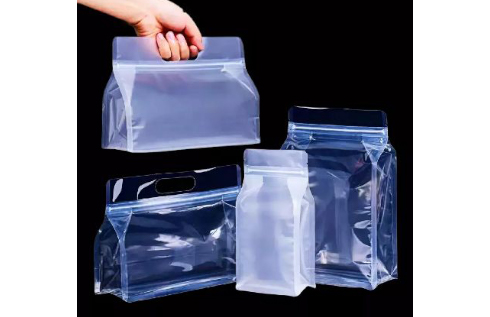
The easiest way to describe “food grade plastic” is as “food safe plastic.” Any plastic that is suitable for contact with consumable food or drink products falls under this umbrella phrase. It’s critical that acidic meals and drinks are maintained in the proper containers since some of these substances can leech chemicals from their surroundings.
Food-grade plastics are made to meet specific needs and are available in a huge range of sizes and forms for the best food packaging design. It includes all plastic packaging available on the market, not just industrial-sized food-grade plastic barrels. All plastic storage containers, including water bottles, yogurt containers, and fizzy drink bottles, must be of the food-grade variety.
Plastics that have received certification as “food grade” are marked with the UN logo. There is, however, more than one variety of food-grade plastic. In the United States, the FDA, which has strict health and safety criteria, offers a good indicator of plastics of food-grade quality.
The following plastics are among the most popular ones that the FDA has certified as food grade:
- Food-grade plastic barrels are made of HDPE (high-density polyethylene).
- Low-density polyethylene, or LDPE, is a material used to make light plastic wrappings and bags.
- Milk bottles made of thick plastic are made of polypropylene or PP.
- PET (Polyethylene Terephthalate) is a plastic material used to make single-use bottles.
Glass
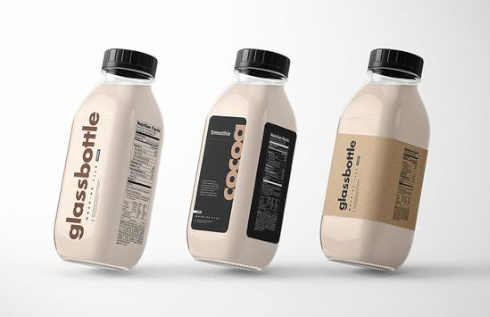
Glass has a wide range of applications and advantages in daily life. It is a long-lasting, recyclable material that is also simple to clean and use for portable food packaging. Water bottles and bento boxes are examples of glass food and beverage containers.
Glass lids are not appropriate for portable containers to be taken to work, school, or on a trip since they can leak. Therefore, the majority of these portable glass food containers have bamboo covers that also double as cutting boards or snap-locking food-grade plastic lids with silicone seals.
Glass is a well-known sustainable material. Due to its capacity to maintain the flavor and purity of a product, this style of packaging may be preferred by a consumer above the alternatives. Its key benefit is that it may be used repeatedly without deteriorating in quality or purity. Wide-mouthed jars or pots and bottles with narrow necks are the most typical types of glass containers used in food packing. Glass is safe and healthy to use because it is inert.
Metal

Since the 1990s, this kind of packaging has been in use. Drinks, both carbonated and non-carbonated, are primarily packaged in metal. It offers a wide range of designs to pick from and has a safety and sustainability record that has been scientifically validated.
Statistics show that shockingly, 80 percent of all metal bottles made to date are still in use. This ability to recycle contributes to environmental protection and a decrease in the amount of waste that is dumped in landfills. Because metal can be recycled endlessly, metal packaging is one of the greenest packaging options available.
Metals can be continuously remelted and combined with additional elements to create new alloys for a variety of uses. Because metal food packaging melts at high temperatures, recycling it demands a lot of energy. However, the recycling process uses less energy and raw materials than the manufacture of virgin materials.
Sustainable Food Packaging Examples
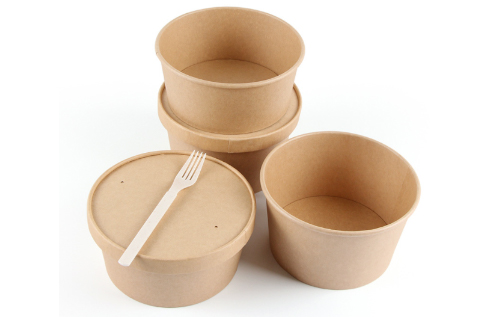
If ever this question has arisen, what is the most environmentally friendly food packaging, then here are a few examples that could fit the best as an answer.
Compostable Drinking Cups
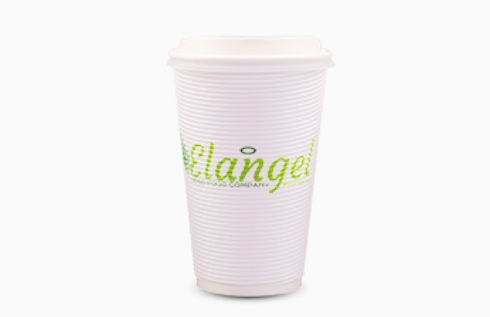
A bioplastic lining is used to create compostable drinking cups. Because this lining is composed of plants, less fossil fuel is used. Although the item is a polymer, its base is renewable. In accordance with the requirements of EU Standard EN134321, this type of packaging composts under specified circumstances. Commercial composting plants have these circumstances.
Compostable cups must be collected separately for commercial composting because they cannot be recycled with paper and cardboard. This is because it is difficult to separate the lining from the paper fibers. The risk of the paper portion of paper-and-plastic cups decomposing and producing greenhouse gases, such as methane, is eliminated when organic waste is diverted from landfills.
Eco-Friendly Salad Bowl
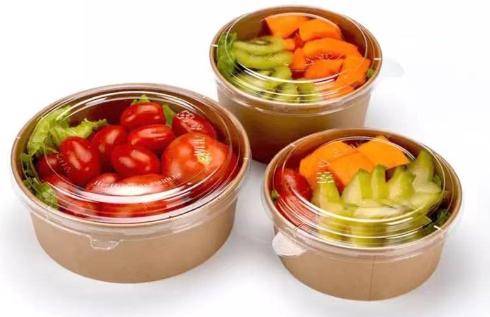
These salad bowls are elegant and durable, combining convenience and sustainability in accordance with the demands of the current eco-friendly movement. They are made only from renewable and biodegradable raw materials such as paper and bamboo.
These salad bowls are the ideal way to take mixed salads, rice salads, and other cold dishes, as well as reheat food. They are made of food-grade materials that won’t leak harmful chemicals like PFOS and PFOA. They don’t in any way taint food. They are also resistant to extreme heat.
Biodegradable Food Packaging Bags
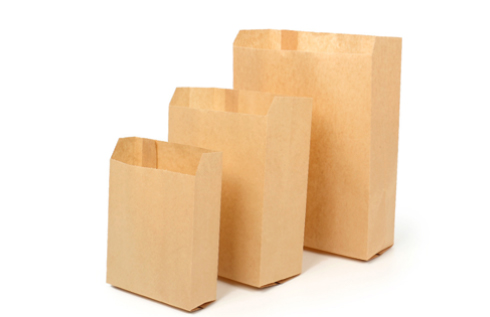
Plastics used in food packaging have been known to contaminate food and make their way into bodies. The issue with polybags is that they are poisonous. The bags include toxic non-food-grade colors with lead and cadmium in them.
These compounds, as well as similar ones, have the potential to leak out and contaminate food, particularly fatty foods. Toxins need to be kept out because even very small amounts of them can be hazardous. The creation of biodegradable bags adheres to industry requirements and uses high-quality materials. The high-quality selection of biodegradable food-grade bags preserves freshness and flavor and is non-toxic, safe, and friendly to the environment.
Kraft Paper Handle Bags
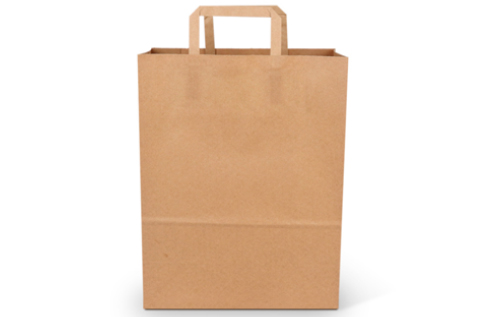
One of the most popular types of bags is kraft paper handle bags. Both grocery stores and department stores frequently utilize these bags. They are made of simple, dark brown Kraft paper, and frequently feature a bottom gusset that is reinforced with another piece of paper. Kraft paper bags aren’t particularly strong.
However, before the bags become ineffective, they can be used a few more times. Additionally, Kraft paper bags are incredibly simple to recycle.
Green Gable Boxes
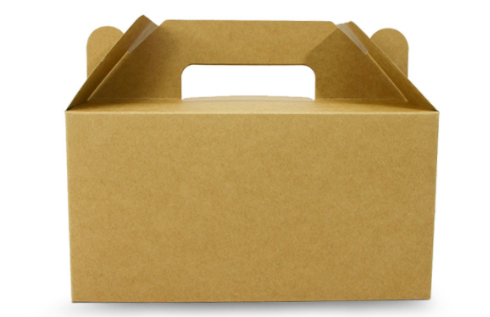
Due to their excellent storage capabilities, Green Gable boxes have gained enormous popularity across all brands. Customers have a positive opinion of products when eco-friendly components are used. Given that they don’t contain any toxins or chemicals that could leach into the food, these boxes look stylish and are ideal for food. They are simple to toss away or discard, and they can even be recycled to create entirely new products. The durable and practical quality of these strong boxes enables the makers to save a lot of money.
Reusable Plastic Bags
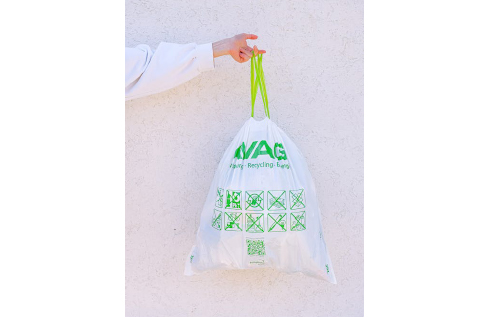
Reusable plastic bags can be reused, eliminating the need for disposable bags. Even though these bags are made of plastic, they are a thicker, more durable variety that is more likely to be recycled once it has served their purpose. Typically, reusable bags are manufactured from recycled or sustainable materials. Reusable shopping bags can offer a viable, ecologically friendly method of establishing and sustaining brand recognition for the company.
Differences Between Biodegradable Vs Compostable Vs Recyclable
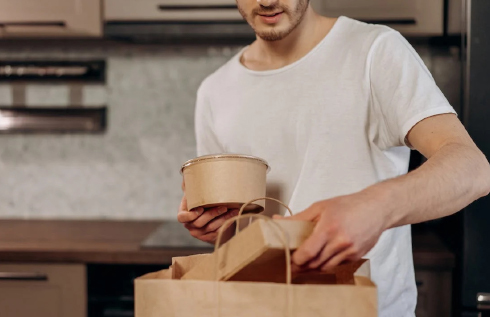
Although often used synonymously biodegradable, compostable, and recyclable are distinct material qualities.
Recyclable
Recyclable is perhaps the most common and distinctive of the three sustainability-related phrases. Finding another use for anything, whether it’s the same thing or restoring it to its original state and using it again, is the idea behind the term “recyclable.”
This phrase is sometimes used as a “catch-all” phrase for a sustainable product and refers to the majority of materials that can be seen, such as metals, plastics, and papers.
Compostable
The word compostable is the polar opposite of recyclable, where something is allowed to decompose rather than utilizing it again. A compostable is described as a decomposed mixture of plants that are used to enrich garden soil.
Compost is almost entirely formed of plants of some kind that can eventually decompose into something called “Humus,” according to the definition, which is rather self-explanatory. Then, humus is applied to the dirt to add fresh nutrients and build healthy soil for growing new plants. Similar to other compostable materials, compostable plastic requires a catalyst, such as heat, to break down into compost.
Biodegradable
Compostable and biodegradable are related terms with some key distinctions. The term “biodegradable” refers to something that can be progressively degraded and broken down into extremely little pieces by bacteria or other natural processes. Even though this sounds close to the concept of biodegradability, take note of the omission of plants.
More than only plants, biodegradable objects can also include papers, cartons, bags, and other things that have been designed to slowly degrade until they can be consumed on a micro level. This is one direction that many manufacturers are likely taking their products, and it’s generally a rather effective push.
Therefore in short, if disposed of appropriately, compostable objects will totally decompose and can even be used to grow more resources. Without having to produce entirely new resources, recyclable goods can be converted into raw materials that can be utilized to generate new products. Finally, biodegradable solutions will ultimately decompose, but it is not evident when, and there is no strategy to use them in any way that might be beneficial in the future.
Find A Trusted Eco-Friendly Food Packaging Manufacturer
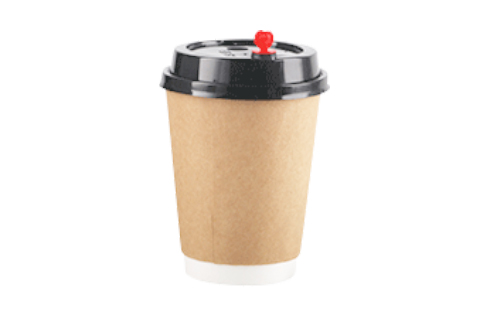
YoonPak is a genuine name when it comes to eco-friendly food packaging manufacturers. They are able to provide partners with advantages specific to their brands or projects from conception to delivery. All of the procedures have been created to lessen the influence of toxic materials on the environment without sacrificing product quality.
The paper products are completely compliant with FDA, LFGB, and FSC regulations, and their suppliers are ISO-certified. Only food-grade inks are used for printing. They also only make use of paperboard that is made of virgin fibers from renewable plantations that are responsibly managed.
It is the leading company for environmentally friendly paper cups and food containers. Yoonpak holds the view that a single paper cup can convey a significant message and that large things can come in simple containers. For this reason, they have created innovative designs and biodegradable disposables.
Conclusion
Due to the security, it offers to the items kept inside, the packaging is important in both food and non-food product categories. It also functions as a promotional product that draws customers’ attention and facilitates contact between companies and customers, thereby promoting the product.
About 65% of all solid trash generated worldwide is made up of packaging materials. Every single life form is impacted by this enormous volume of packaging waste, which affects the environment. This suggests that environmentally friendly packaging is urgently needed. In a word, sustainable packaging refers to a culture or technique of developing and utilizing packaging materials safe for the environment. YoonPak comes with the best in business.
It makes sustainable food packaging available in the market to help reduce overexploitation and promote sustainable living. The concept of sustainable packaging can be quite complex starting from the material used, its advantages, and its use. Contact YoonPak now.







